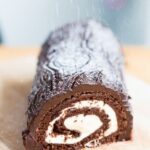Are you looking for a way to add an elegant and delicious touch to your cakes? In this article, we will explore the art of decorating cakes with white chocolate. From choosing the right type of white chocolate to creating intricate designs and delicate garnishes, we will cover everything you need to know to elevate your cake decorating skills.
White chocolate is a versatile and luxurious ingredient that can be used to adorn cakes in a variety of ways. Whether you are looking to add simple drizzles and drips or create elaborate decorations, white chocolate provides a blank canvas for your creative expression. With the right techniques and tips, you can master the art of using white chocolate to take your cake decorating to the next level.
In the following sections, we will discuss how to choose the best type of white chocolate for cake decorating, as well as basic techniques for melting and tempering it. We will also explore different methods for creating stunning white chocolate drizzles, curls, shards, and delicate designs.
Additionally, we will provide tips for adding flavor and color to your white chocolate decorations, as well as troubleshooting common issues that may arise during the decorating process. So let’s dive into the world of white chocolate decoration and showcase your masterpiece.
Choosing the Right White Chocolate for Cake Decorating
When it comes to decorating cakes with white chocolate, choosing the right type of white chocolate is essential for achieving the desired results. Not all white chocolates are created equal, and some are better suited for decorating than others. Here are some key factors to consider when selecting white chocolate for cake decoration.
First and foremost, it’s important to choose a high-quality white chocolate that contains a high percentage of cocoa butter. This will ensure that the white chocolate has a smooth and creamy consistency when melted, making it easier to work with for decorating purposes. Look for white chocolate that contains at least 30% cocoa butter for best results.
Another important consideration is the sweetness of the white chocolate. Some varieties of white chocolate can be overly sweet, which may not complement the overall flavor profile of the cake. Opt for a white chocolate that strikes a good balance between sweetness and creaminess, allowing it to enhance the taste of the cake rather than overpowering it.
Additionally, pay attention to any additional ingredients in the white chocolate, such as vanilla or other flavorings. These can impact the final flavor of the decorated cake, so choose a white chocolate that aligns with your desired taste profile.
Lastly, consider whether you need couverture or compound white chocolate. Couverture is higher in cocoa butter content and is suitable for more intricate decorations, while compound white chocolate contains other fats in place of cocoa butter and is better for simple decorations like drizzles and drips.
It’s essential to choose high-quality 30% cocoa butter content sweetened with vanilla couverture white chocolate over compound ones because they melt more smoothly and create decorations with a smoother finish better suited for intricate designs and garnishes.
| Aspect | Consideration |
|---|---|
| Cocoa Butter Content | At least 30% |
| Sweetness | Balance between sweetness and creaminess |
| Additional Ingredients | Avoid excess flavorings or additives |
| Type of White Chocolate | Choose high-quality couverture over compound if creating intricate designs |
Basic Techniques for Melting and Tempering White Chocolate
When it comes to decorating a cake with white chocolate, mastering the art of melting and tempering is essential. White chocolate is more sensitive to heat than dark or milk chocolate, making it crucial to follow specific techniques to ensure a smooth and glossy finish. Here are some basic techniques for melting and tempering white chocolate:
- Choose high-quality white chocolate: Selecting good quality white chocolate is important for successful melting and tempering. Look for white chocolate with a higher cocoa butter content for better results.
- Gently melt the white chocolate: Use a microwave or double boiler to gently melt the white chocolate. Be sure to stir the chocolate frequently to prevent scorching or burning.
- Temper the melted white chocolate: Once the white chocolate is melted, it needs to be tempered to ensure that it sets properly and has a smooth texture. This involves carefully heating and cooling the white chocolate while stirring continuously.
Mastering these basic techniques for melting and tempering white chocolate will set the foundation for creating beautiful decorations for your cakes. Whether you’re drizzling, creating shards and curls, or making delicate designs, properly melted and tempered white chocolate will elevate the presentation of your desserts.
Adding flavor and color to your white chocolate decorations can also enhance the overall look and taste of your cake. By infusing the white chocolate with extracts like vanilla or almond, or using food coloring to achieve custom hues, you can create unique decorative elements that complement your cake perfectly. Understanding these fundamental techniques will allow you to explore your creativity in decorating cakes with white chocolate.
Creating White Chocolate Drizzles and Drips
One of the most popular ways to decorate a cake with white chocolate is by creating drizzles and drips. This technique adds a touch of elegance and sophistication to any cake, elevating its visual appeal. The process of creating white chocolate drizzles and drips is relatively simple, but it requires precision and attention to detail.
To start, you will need high-quality white chocolate that is specifically designed for melting and decorating. It’s important to choose a brand that has a smooth texture and a creamy taste, as this will ensure that your drizzles and drips turn out beautifully. Once you have the right type of white chocolate, you can begin the melting process.
There are several methods for melting white chocolate, including using a double boiler or a microwave. Regardless of the method you choose, it’s crucial to melt the chocolate slowly and gently to avoid burning or overheating it. After the white chocolate has been melted, you can then proceed to create delicate drizzles and elegant drips on your cake.
| White Chocolate Drizzle Tips | White Chocolate Drip Tips |
|---|---|
| Melt chocolate slowly in a double boiler | Use chilled ganache for thicker drips |
| Work quickly before the chocolate sets | Allow ganache to cool slightly before dripping |
| Use a spoon or piping bag for precise drizzling | Tilt the cake at an angle for natural-looking drips |
Making White Chocolate Shards and Curls for Cake Garnishes
When it comes to decorating cakes with white chocolate, making shards and curls can add a touch of elegance and sophistication to your masterpiece. Whether you’re looking to add texture or a visually appealing element to your cake, white chocolate shards and curls are the perfect choice. Here’s how you can create these stunning garnishes for your next cake decorating project:
- Start by selecting high-quality white chocolate that is specifically designed for melting and molding. Avoid using regular eating chocolate as it may not set properly or result in a dull finish.
- Break the white chocolate into small, evenly-sized pieces to ensure even melting. You can use a serrated knife to carefully shave the chocolate into thin strips for making curls.
- Using a double boiler or microwave, melt the white chocolate slowly and gently, stirring frequently to prevent scorching. It’s essential to monitor the temperature closely to achieve the right consistency for creating shards and curls.
Once you have successfully melted and tempered the white chocolate, you can get creative with different techniques for shaping and forming shards and curls:
- To make shards, spread the melted white chocolate onto a parchment-lined baking sheet in a thin layer. Allow it to partially set before scoring it with a sharp knife into uneven pieces or geometric shapes.
- For curls, use a vegetable peeler on a cooled slab of white chocolate to create delicate spirals or ribbons. Alternatively, you can also carefully use a warm offset spatula to create elegant curls from the solidified chocolate.
- After creating your shards and curls, let them harden completely at room temperature or in the refrigerator before carefully removing them from the parchment paper and arranging them as desired on top of your cake.
Mastering the art of crafting white chocolate shards and curls will undoubtedly elevate your cake decorating skills. These exquisite garnishes will not only complement your cake’s flavor but also provide an eye-catching visual appeal that will leave your guests impressed. With some practice and patience, you’ll soon be able to effortlessly adorn your cakes with beautiful white chocolate decorations.
Using White Chocolate to Create Delicate Decorations and Designs
Decorating a cake with white chocolate allows for creativity and versatility. The creamy texture and subtle sweetness of white chocolate make it perfect for creating delicate decorations and intricate designs on cakes. From flowers and leaves to intricate lace patterns, white chocolate can be used to elevate the overall look of any cake.
Creating White Chocolate Flowers and Leaves
One of the most popular ways to use white chocolate for delicate decorations is by crafting flowers and leaves. To do this, melt the white chocolate and pour it into molds shaped like petals or leaves. Once the chocolate sets, carefully remove the shapes from the mold and arrange them on top of the cake. You can also use a piping bag to create freeform flowers or leaves directly onto parchment paper before setting them in the refrigerator to harden.
Designing Lace Patterns With White Chocolate
Another stunning way to decorate a cake with white chocolate is by creating intricate lace patterns. Melted white chocolate can be piped onto acetate sheets in various ornate designs, such as swirls or filigree patterns. Once the chocolate has set, carefully peel off the acetate sheet and gently press the lace design onto the sides of the cake for a beautiful, elegant look.
Using Stencils for Intricate Designs
Stencils are another tool that can be used to create delicate designs with white chocolate. Simply place a stencil on top of a chilled frosted cake, spread melted white chocolate over it, then carefully lift away the stencil to reveal a beautifully detailed pattern. This method allows for precise designs without having to have advanced piping skills.
Decorating a cake with white chocolate may seem daunting at first, but with practice and patience, you can create stunning delicately decorated masterpieces that will impress any crowd. Experimentation is key when working with white chocolate, so don’t be afraid to try out different techniques until you find what works best for your specific design vision.
Tips for Adding Flavor and Color to White Chocolate Decorations
When it comes to decorating cakes with white chocolate, it’s important to consider not only the visual appeal but also the taste. Adding flavor and color to your white chocolate decorations can elevate the overall experience of enjoying your beautifully adorned cake.
Infusing Flavor Into White Chocolate
One way to add a unique flavor to your white chocolate decorations is by infusing the chocolate with different ingredients. You can experiment with adding extracts such as vanilla, almond, or citrus to the melted white chocolate for a hint of flavor. Alternatively, you can steep herbs or spices in warm cream before adding it to the melted white chocolate, creating an infused ganache that can be used for drizzles, drip effects, and other decorations.
Adding Natural Coloring
Incorporating natural colors into your white chocolate decorations can bring a vibrant and eye-catching element to your cake. You can use powdered freeze-dried fruits such as raspberries or blueberries to create colorful speckles throughout the white chocolate drizzles or shards. Another option is to use natural food coloring made from ingredients like beet juice or turmeric for a pop of color without compromising the taste of the white chocolate.
Experimenting With Unique Ingredients
To take your cake decorating to the next level, consider experimenting with unique ingredients that complement the flavor profile of white chocolate. This could include incorporating finely chopped nuts, dried fruit pieces, or even edible flowers into your white chocolate decorations. These additions not only add texture and visual interest but also introduce additional layers of flavor that will surprise and delight anyone who enjoys your decorated cake.
By incorporating these tips for adding flavor and color to your white chocolate decorations, you can take your cake decorating skills to new heights and create visually stunning and delicious masterpieces that will impress any audience. Whether you choose to infuse flavors, add natural coloring, or experiment with unique ingredients, your creative expressions using white chocolate will undoubtedly enhance the overall experience of indulging in a beautifully decorated cake.
Troubleshooting Common Issues When Decorating With White Chocolate
Decorating a cake with white chocolate can be a beautiful and delicious way to add an extra touch of elegance to any dessert. However, like any other culinary endeavor, working with white chocolate can sometimes present challenges. In this section, we will discuss common issues that may arise when using white chocolate for cake decoration and provide helpful troubleshooting tips.
One common issue when decorating with white chocolate is dealing with the texture of the chocolate. White chocolate has a lower melting point compared to dark or milk chocolate, which can make it more prone to seizing or becoming grainy if not handled properly. To avoid this problem, it is important to melt and temper the white chocolate correctly. Using a double boiler or microwave at low power settings can help prevent overheating and ensure a smooth consistency.
Another challenge that may arise is achieving the desired thickness and viscosity of the white chocolate for drizzling or dripping. If the chocolate is too thin, it may run off the cake too quickly, while if it is too thick, it may not flow easily or create an even coating. To troubleshoot this issue, adding a small amount of vegetable oil or cocoa butter to thin out the chocolate slightly can help achieve the perfect consistency for decorating.
Lastly, white chocolate decorations may also be prone to discoloration or blooming, especially if not stored and handled properly. To prevent this issue, it is important to store finished white chocolate decorations in a cool, dry place away from direct sunlight and moisture. Additionally, incorporating coloring agents specifically designed for use with white chocolate can help maintain the pristine appearance of your decorative elements.
By addressing these common issues and implementing troubleshooting techniques as needed, you can confidently decorate your cakes with stunning and flawless white chocolate designs that are sure to impress both visually and gustatorily.
Conclusion
In conclusion, decorating a cake with white chocolate can take your baking skills to the next level and add an elegant touch to your creations. With the right techniques and tips, you can create show-stopping designs that will impress your friends, family, or clients. Whether you’re a beginner or a seasoned baker, working with white chocolate for cake decoration is a skill worth mastering.
By choosing high-quality white chocolate and properly melting and tempering it, you can ensure that your decorations will have a beautiful shiny finish and smooth texture. From creating drizzles and drips to making shards and curls for garnishes, the possibilities are endless when it comes to using white chocolate as a decorative element on cakes.
Adding flavor and color to your white chocolate decorations can also elevate the overall look and taste of your cakes. Whether it’s incorporating different extracts or food coloring, experimenting with these elements can enhance the visual appeal of your masterpiece. And if you encounter any issues along the way, there are troubleshooting tips available to help you overcome common challenges in working with white chocolate.
In the end, decorating a cake with white chocolate allows you to unleash your creativity and showcase your skills as a baker. With practice and patience, you can transform simple cakes into works of art that will leave a lasting impression on anyone who sees or tastes them. So go ahead and explore the world of white chocolate decoration – it’s time to turn your cakes into delicious masterpieces.
Frequently Asked Questions
How to Make White Chocolate Cake Toppers?
Making white chocolate cake toppers is a simple process that starts with melting white chocolate. Once melted, pour the white chocolate into molds and refrigerate until they are set. Then carefully remove the hardened shapes and decorate your cake.
How Do You Cover a Cake With White Ganache?
Covering a cake with white ganache involves heating heavy cream and pouring it over chopped white chocolate. Stir until smooth and then let it cool to a spreadable consistency before applying it to the cake in a thin layer, smoothing as you go.
How Do You Melt White Chocolate for Lettering?
When melting white chocolate for lettering, it’s important to use low heat to avoid scorching the chocolate. Use a double boiler or microwave, stirring frequently until the chocolate is smooth and pourable. Once melted, transfer it to a piping bag for lettering on cakes or other desserts.

Welcome to my blog about home and family. This blog is a place where I will share my thoughts, ideas, and experiences related to these important topics. I am a stay-at-home mom with two young children. I hope you enjoy reading it! and may find some helpful tips and ideas that will make your home and family life even better!





